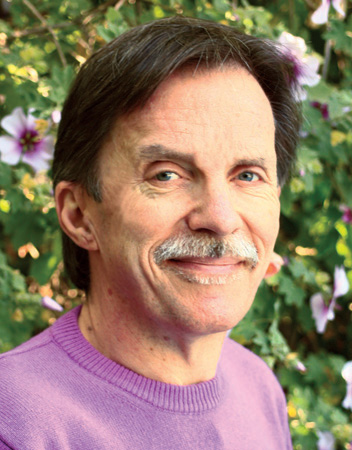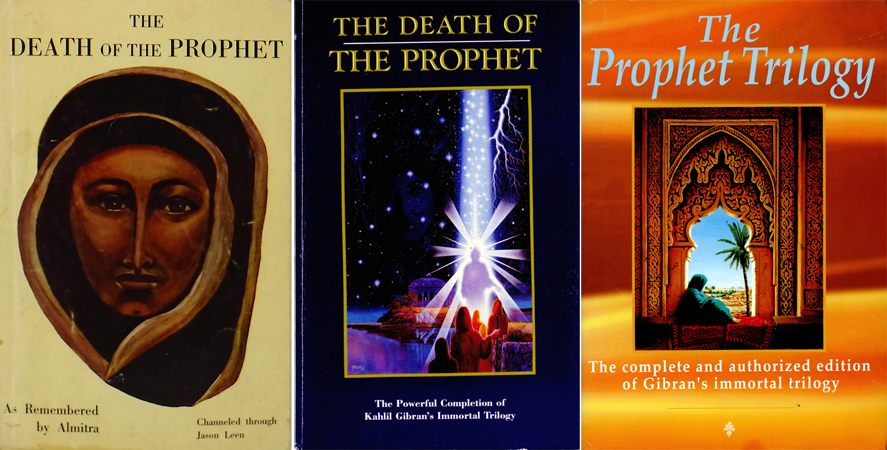by Philippe Maryssael, retired translator and terminologist, Arlon, Belgium, April 10, 2021.
With the support and skills of his friend and benefactress Mary Haskell (1873‑1964), Gibran Kahlil Gibran (1883-1931), the world-famous author, poet and artist from Mount Lebanon published his masterpiece The Prophet in New York In September 1923.
The Prophet was supposed to be the first installment of a trilogy that Gibran could not complete before he died on 10 April 1931, 90 years ago. He started work on the second installment but decided not to complete it before he published Jesus the Son of Man (1928) and The Earth Gods (1931). Only at the end of his life, during long hours of hard work to finish The Wanderer (1932), could he make some progress on the book that Barbara Young, his literary secretary from 1925 until his death, finalized by compiling both finished and unfinished sections and by adding missing parts, and brought to his publisher Alfred Knopf the manuscript that got published in November 1933 under the title The Garden of the Prophet.
Apart from a few lines that Gibran scribbled on an odd piece of paper, nothing exists of the third and final installment that Gibran had in mind soon after The Prophet was available in the shops. He had his mind set on the title The Death of the Prophet.
Quite unexpectedly, the year 1979 saw the publication of a book by the clairaudient author and filmmaker Jason Leen (1950-2011), the first edition of The Death of the Prophet, as revealed to him by the Seeress Almitra.

“Jason had never read the work of Gibran and was not aware of Gibran’s intention to write a trilogy of Prophet books when he first began his adventure in 1973. When Jason was informed, during the first years of his work, about Gibran and his prediction of the completion of the trilogy, he cautiously listened, and at first resisted the theories of transmigration and posthumous influence as the source of his work.”
“A sudden opportunity allowed Jason to move his family to a secluded retreat in the mountains of southwest Oregon, where he quietly allowed the precious text of the manuscript to be completed. Jason worked in silence, avoiding any public comment on his progress for six years. In 1979 his patience and care prevailed with the completion and publishing of The Death of the Prophet; the final portion of the trilogy as told through the voice of Almitra, the Seeress.”
“Once the first edition was published, Jason found and then began to study the Gibran letters and journals, which contained the references of the third book, The Death of the Prophet. He read Gibran’s insistent declaration that the final book would be written, allowing Almustafa to return to tell his story. Jason then completely realized that he had not worked alone. Once he fully understood the truth of Gibran’s involvement, he requested that the Library of Congress acknowledge the posthumous contribution made by Gibran, which resulted in the book being listed under both Gibran and Leen in the American Libraries.” (Excerpt of Jason Leen’s biography quoted from https://jandj-publishing.com/)
In 1988, a revised edition of The Death of the Prophet was published by Illumination Arts Publishing Company, Inc. in Bellevue, Washington. “In honour of the 25th year anniversary of the completion of the three books which form the trilogy of The Prophet, J & J Publishing released the Premiere English Edition of The Prophet Trilogy, containing all three books, presented in the manner that Gibran had always envisioned.” (Excerpt of History of the Prophet Trilogy quoted from https://jandj-publishing.com/)

Philippe Maryssael was born in Brussels, Belgium, in 1962. He studied translation in Brussels in the early 1980s. He later studied terminology and terminotics, the set of techniques involving the use of computer software in conducting terminology research on vast text corpora and deploying terminology database and translation memory solutions in support of the translation business.
His first job was as a bank clerk in Brussels. After a couple of years, he became a professional translator and terminology pioneer in the insurance and financial sectors before he moved to Luxembourg and joined a European financial institution as a translator-reviser, terminologist, and computer-aided translation and terminology tools specialist. There, after a decade, he changed the course of his career and became a business process manager involved in paving the way to the institution-wide dissemination of business process optimization and re-engineering practices.
In July 2017, he decided to retire. The time was right for him to indulge in his life-long interest in the writings of Kahlil Gibran. He started collecting first editions of the books that Gibran wrote in English. He also started comparing the numerous French translations of his works. The natural next step was his intention to provide personal translations of Gibran’s English books into French and to have them published. His first published work came out at the end of 2018: Le Fol, a bilingual presentation of the text of The Madman and his new translation, with an in-depth analysis of Gibran’s use of the English language and a study of several themes across his entire body of books.
In February 2020, Philippe Maryssael published his second book by Gibran, Le Sable et l’Écume, translated into French from Sand and Foam (1926). His third book, Le Prophète, translated from Gibran’s masterpiece The Prophet, has been available since December 2020.
More information on Philippe Maryssael and his translation projects can be found on his personal website at http://www.maryssael.eu/en/.